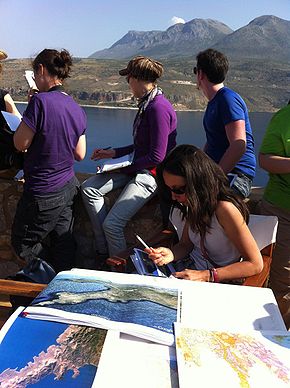Since several years, the "Living Fault" course is given in Greece (region of Corinth and Peloponnesus). Main topics are: morphological traces of past earthquakes (Corinth 1981, Sparta 464BC); genesis and datation of Holocene fault scarps and of flights of uplifted marine terraces (interplay between tectonic and climatic processes); role of active faulting in the building of relief and sculpting of the landscape; mechanical models for the formation of the Corinth rift and for the evolution of the Anatolian-Aegean system.
The course is taught by peoples from IPGP's tectonics lab, in collaboration with peoples from the Athens National Observatory and the University of Athens. It sees the participation of french students (M2, PhD) as well as students from Greece or other countries, and few invited researchers. The course, 8 days in may, is given in english. It is organized as a seminar, requiring work on selected scientific articles before the course, and active participation of all participants to scientific discussions in the field.
Description ED1415-S6: IPGP International field course on "Living faults" (Failles Vivantes)
The aim of the course "Living Faults" is to study in the field active tectonic structures, to learn how such structures generate earthquakes and drive landscape evolution, and to discuss the mechanics of active deformations at lithospheric scale. It takes place in selected regions of the world where seismotectonic objects are particularly spectacular and where actual strain rates are high.













